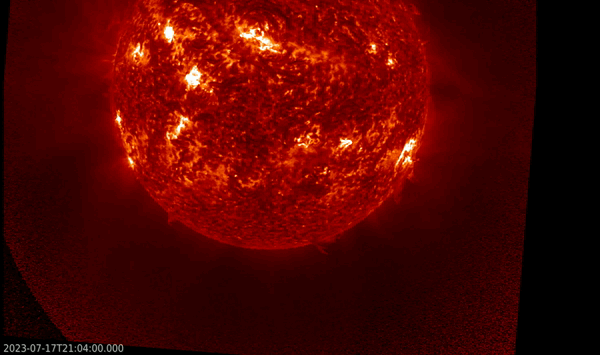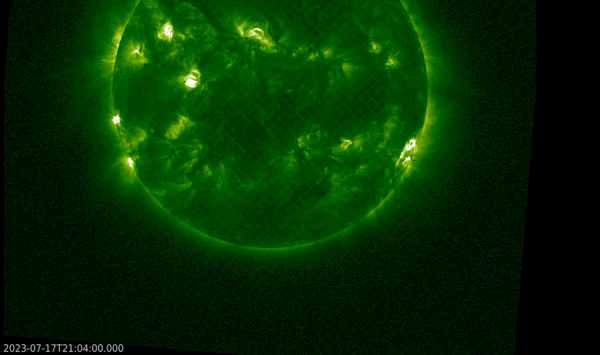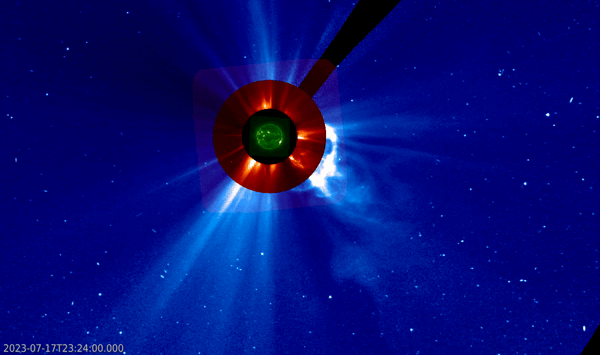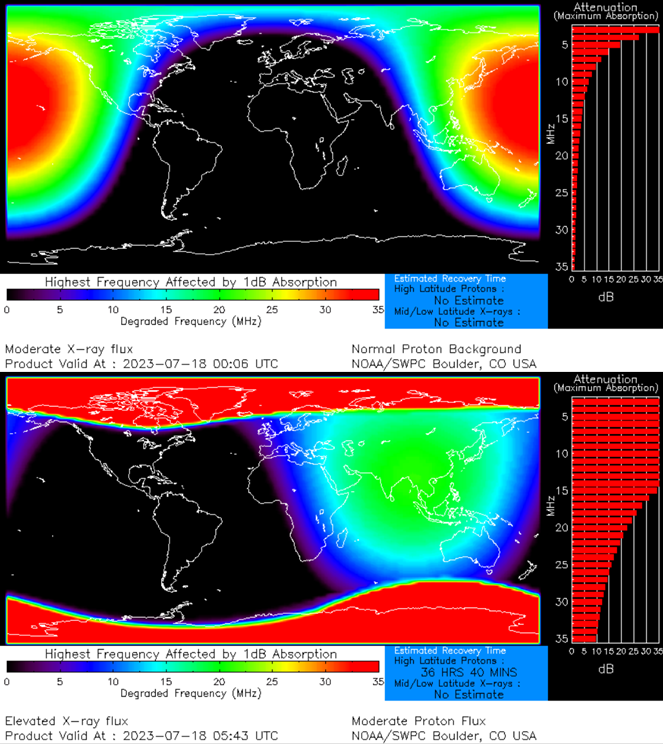NOAA 3363, a large sunspot that has been dominating the solar disk for the last 2 weeks, was the source of an M5.7 flare peaking at 00:06UTC on 18 July (GOES). The eruption was preceded by an M2.7 (22:54 UTC) and a C7.4 (22:32UTC) flare produced by the same active region. A coronal mass ejection (CME) was associated with both the M2 and M5 flaring events, with the much faster second CME (1100 km/s according to CACTus) very quickly catching up with the first one, already when passing through the SOHO/LASCO C2 field of view. Due to the location of NOAA 3363 near the southwest solar limb, the bulk of this CME is directed away from Earth, however an earth-directed component may still deliver a glancing blow late on 19 July. Only a minor to moderate geomagnetic storm is expected. The imagery underneath shows the eruptions in extreme ultraviolet (EUV) as recorded by the GOES/SUVI instrument in respectively the 30.4 nm passbands (orange; temperatures around 80.000 degrees) and 9.4 nm (green; temperatures of multi-million degrees). In the last clip, the EUV imagery by SUVI is overlaid by coronagraphic imagery from SOHO/LASCO C2 and C3 showing the resulting bright CME. Note the C3 images are only available from 00:00UTC onwards.



Associated with this violent eruption was an increase in the greater than 10 MeV proton flux. Starting at 01:15 UTC on 28 July, the proton flux seems to have leveled at a value around 600 pfu, with currently a maximum of 620 pfu at 06:15 UTC (GOES). This constitutes a moderate solar radiation storm (S2 on the NOAA scales), meaning that satellites may experience an occasional bit flip ("single event upset") and that high frequency (HF) communications may be affected over the polar areas (a so-called Polar cap Absorption"). This is by far the strongest proton event so far this solar cycle (SC25), and the first S2-level storm. Though a gradual decrease of the 10MeV proton flux is now expected, it is possible that it increases again tomorrow with the associated CME passing by the earth environment. There was no biological radiation hazard for astronauts, or for passengers in airplanes flying over the poles. Indeed, the flux of much more energetic protons (100 MeV or more) got barely enhanced during the event. The effects on HF communications by the flare and the proton event are illustrated in the D-RAP model underneath showing that the M-class events affected HF Com mostly over the Pacific Ocean, whereas the proton event clearly affected HF Com over the polar areas.






